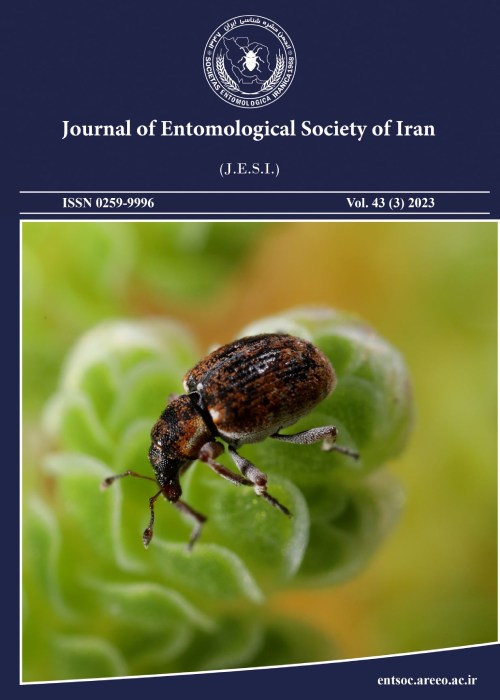The effect of temperature and humidity on grooming behaviour of honeybee, Apis mellifera (Hym.: Apidae) colonies against varroa mite, Varroa destructor (Acari: Varroidae)
Abstract:
Grooming behaviour is one of the important mechanisms of honeybee defence against parasitic mites. In addition to genetical characteristics, environmental conditions affect the behavioural traits of honeybee colonies. The main objective of this study was to examine the effect of temperature and humidity on the ability of honeybee workers to remove varroa mites from their body. One hundred worker bees from resistant and susceptible colonies were placed in cages and infested with 40 varroa mites per cage. Cages from each group of workers were randomly assigned to a combination of temperature and humidity treatments. Individual cages were held in incubators at 10, 25 and 34C under low (20%), medium (50%) and high (80%) humidity. The entire experiment was replicated three times (18 cages per replicate). The proportion of mites falling into the base of the cages (grooming), or migrating within the closed system and the number of dead bees were monitored on day 2, 4 and 6 of experiment. At the end of experiment the proportion of mites on the live bees, dead bees and in the equipment was also determined. The results showed significant differences in the ability of the two groups to groom mites off their bodies and that the relative effectiveness of the grooming in the two groups of bees was dependent upon the combination of temperature and humidity to which they were exposed. Total mite mortality of the two groups of bees was also different; however, it was not influenced by temperature. Total mite mortality may include grooming, or the natural mite fall that cannot relocate their host. In the programs that are attempting to breed bees with increased grooming behaviour and enhanced resistance to Varroa destructor (Anderson & Trueman), the environmental conditions should be considered under which experiments are carried out.
Keywords:
varroa mite , honeybee , grooming , temperature , humidity
Language:
English
Published:
Journal of Entomological Society of Iran, Volume:28 Issue: 2, 2009
Pages:
7 to 23
magiran.com/p638163
دانلود و مطالعه متن این مقاله با یکی از روشهای زیر امکان پذیر است:
اشتراک شخصی
با عضویت و پرداخت آنلاین حق اشتراک یکساله به مبلغ 1,390,000ريال میتوانید 70 عنوان مطلب دانلود کنید!
اشتراک سازمانی
به کتابخانه دانشگاه یا محل کار خود پیشنهاد کنید تا اشتراک سازمانی این پایگاه را برای دسترسی نامحدود همه کاربران به متن مطالب تهیه نمایند!
توجه!
- حق عضویت دریافتی صرف حمایت از نشریات عضو و نگهداری، تکمیل و توسعه مگیران میشود.
- پرداخت حق اشتراک و دانلود مقالات اجازه بازنشر آن در سایر رسانههای چاپی و دیجیتال را به کاربر نمیدهد.
In order to view content subscription is required
Personal subscription
Subscribe magiran.com for 70 € euros via PayPal and download 70 articles during a year.
Organization subscription
Please contact us to subscribe your university or library for unlimited access!


